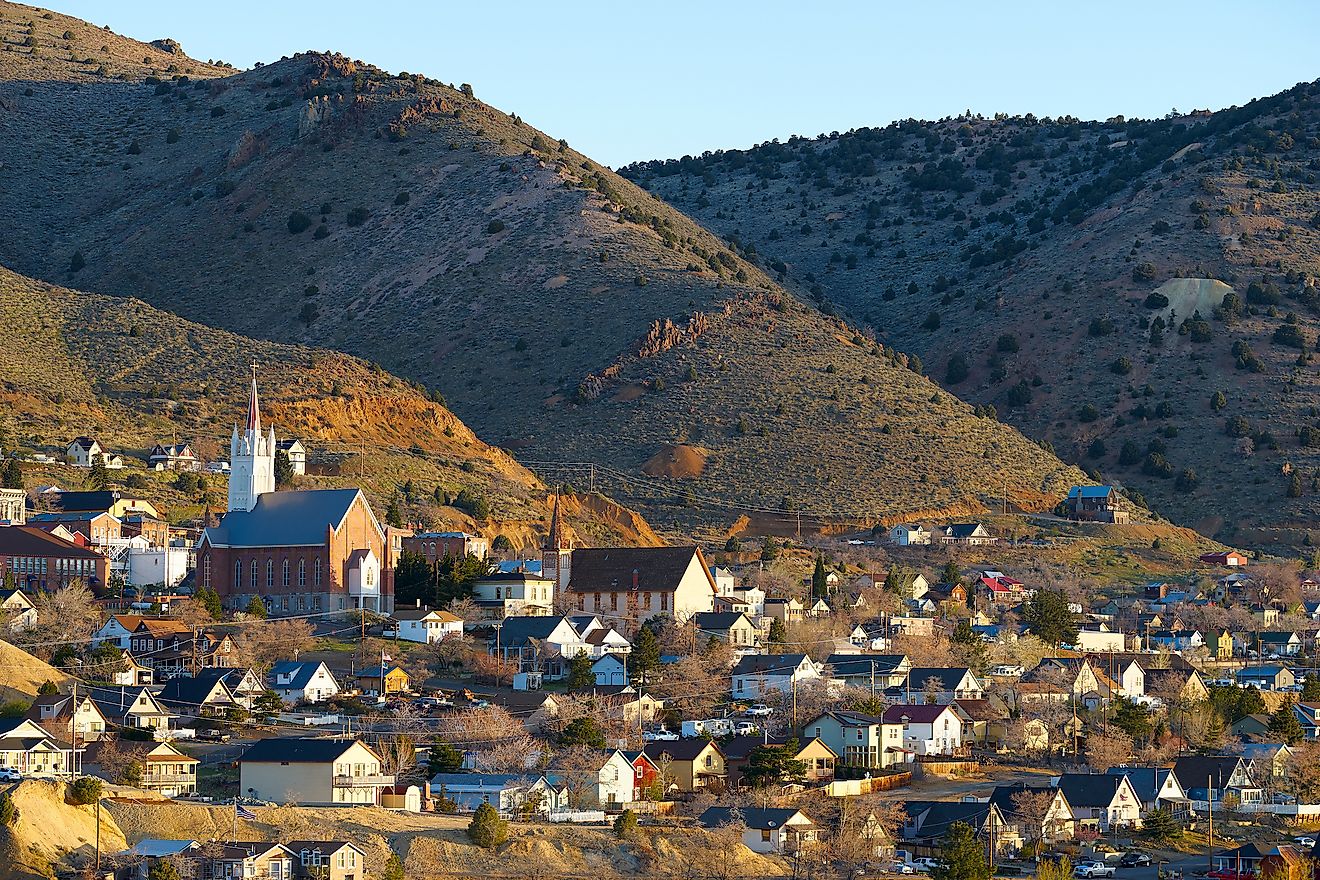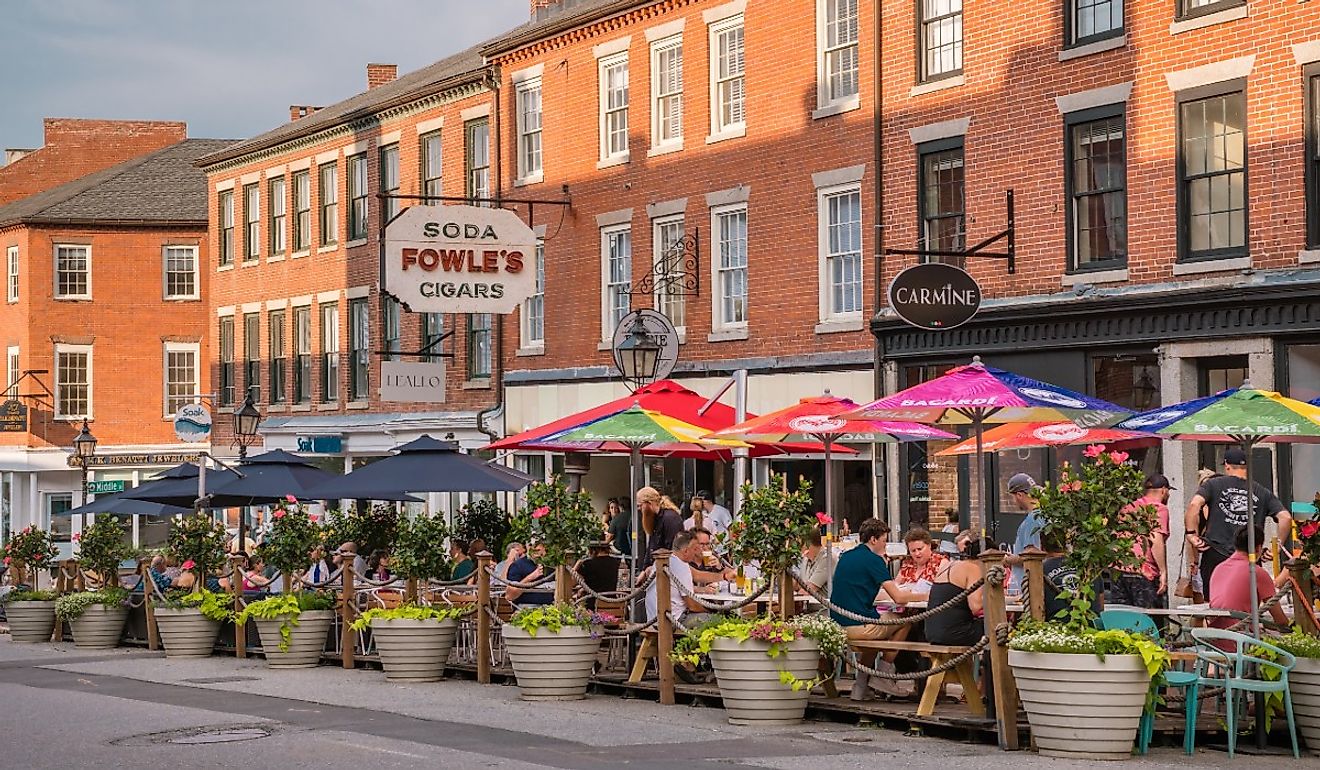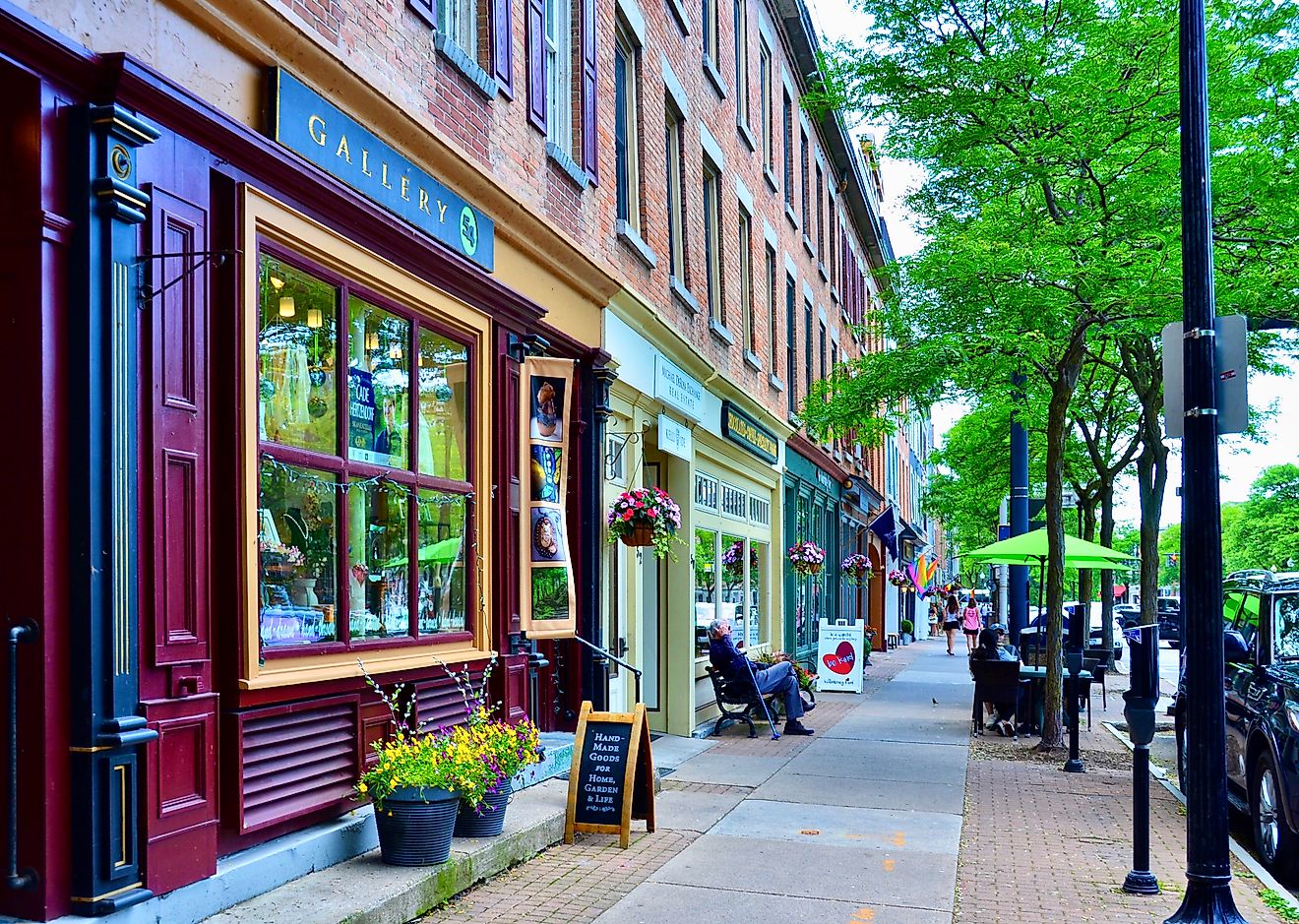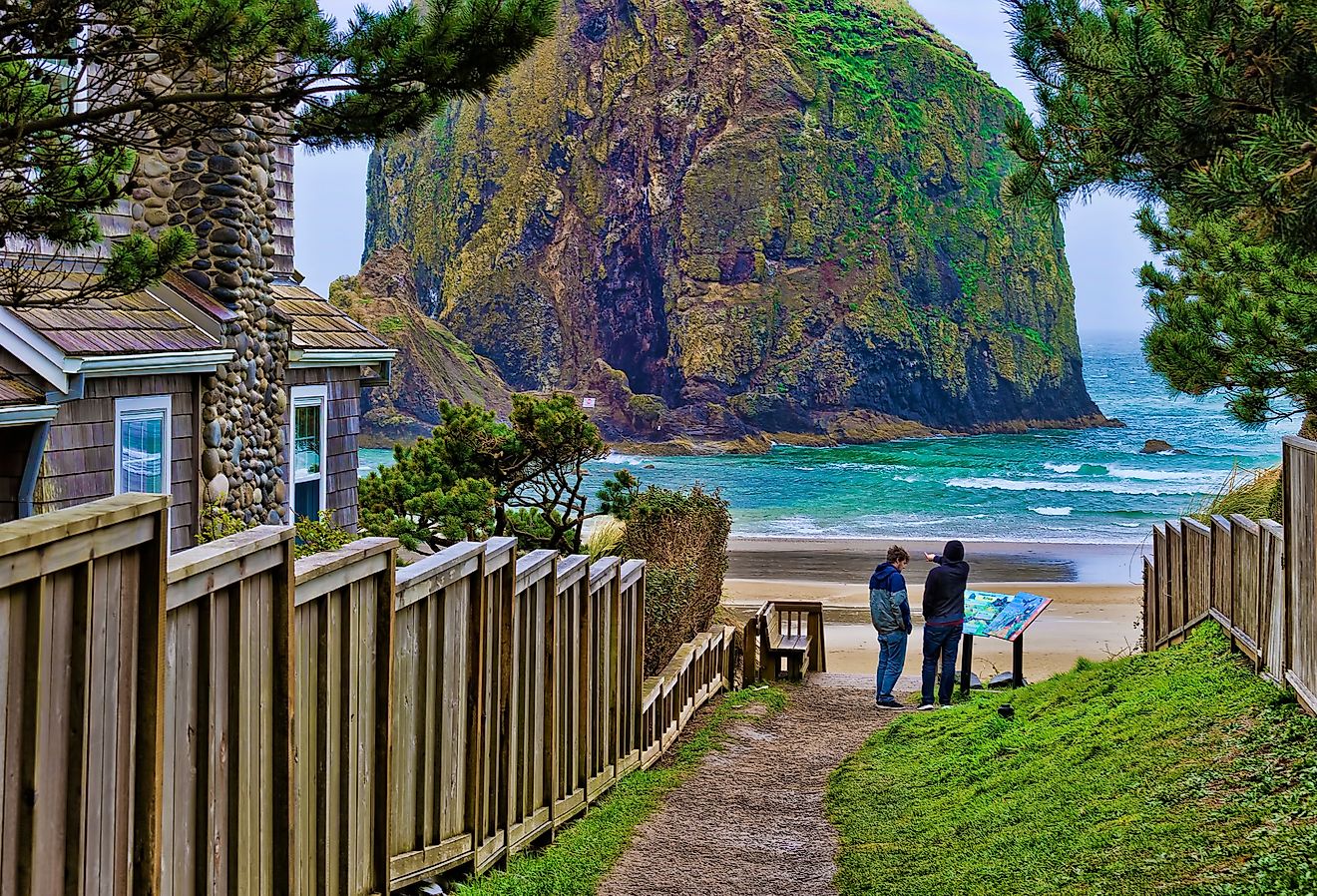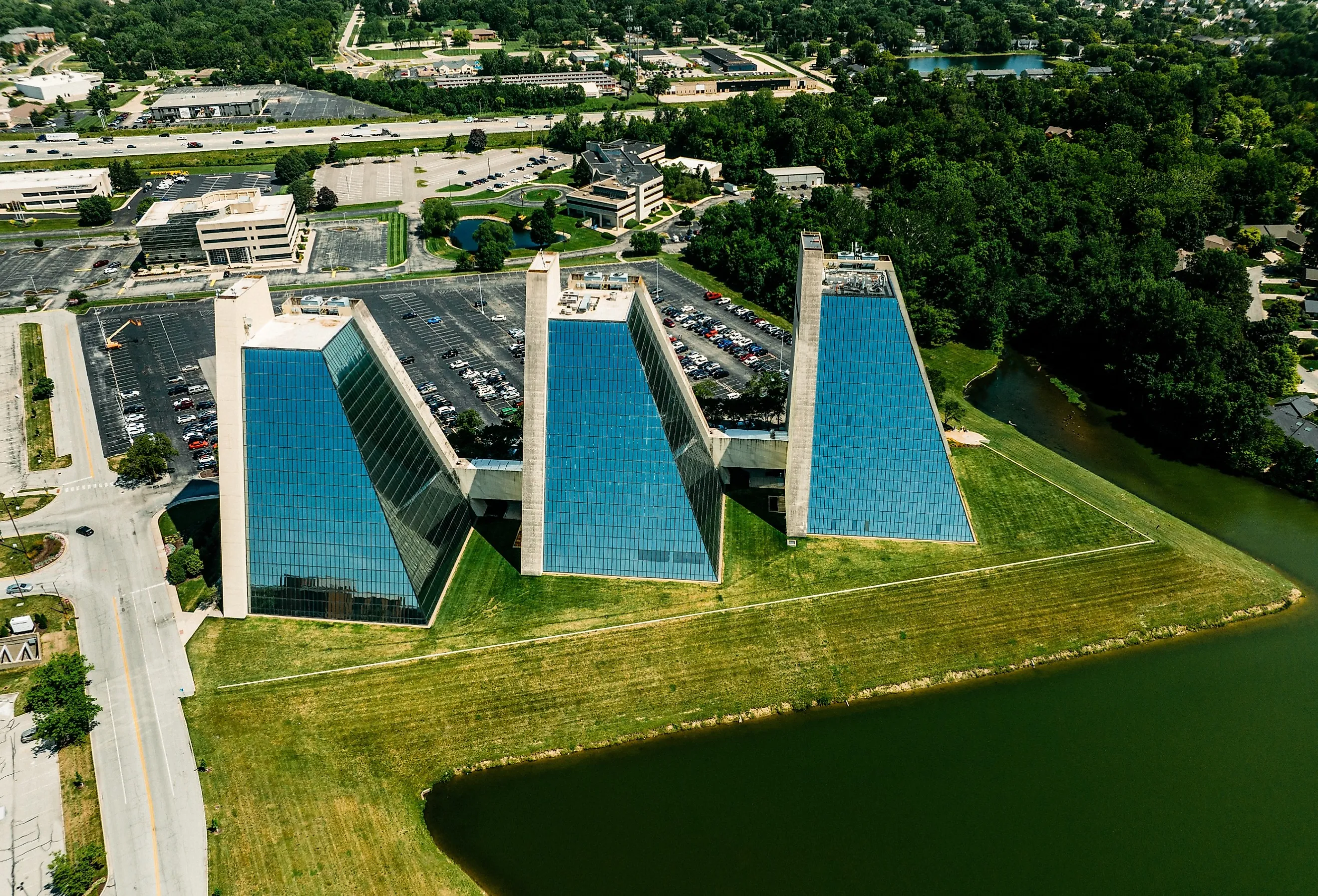
7 Strangest Landmarks in Indiana
Think that all there is to Indiana is cornfields and college towns? Think again. Hidden between Illinois and Ohio, this flatter-than-a-pancake state borders Lake Michigan and features everything from Civil War battlefields to factory boomtowns. Famous for car plants, rock quarries, and nowhere-in-particular surprises, Indiana has a long tradition of converting utilitarian land into seemingly out-of-nowhere oddities. From a gravity-defying cedar sculpture to a floating baseball encased in decades’ worth of paint, the Hoosier State offers some serious head-scratching stops. These landmarks still stand, are fully accessible, and could become the most unforgettable stops of your road trip. So get out a map, clear space for your camera, and take to the road. Indiana’s oddest landmarks await.
The Grave in the Middle of the Road, Amity
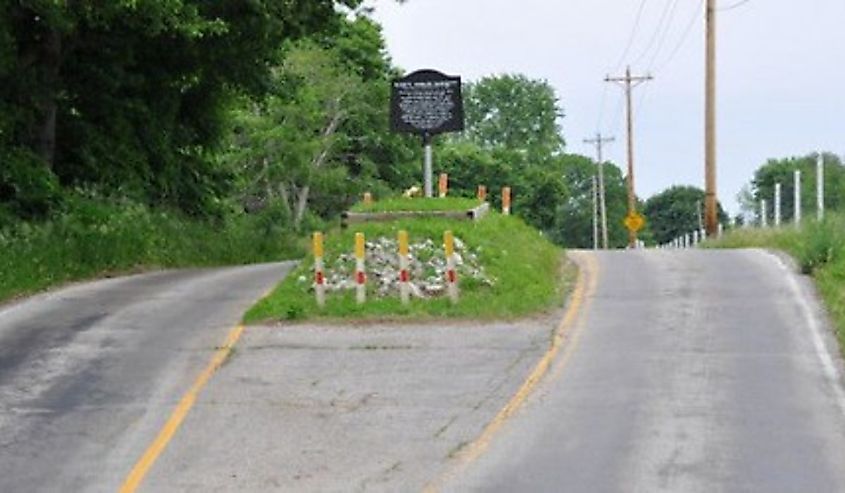
Most grave sites try to avoid traffic. This one decided to sit in the middle of it. Nancy Kerlin Barnett was buried in 1831 on a hill she loved near Sugar Creek. When Johnson County planned to pave over the site in 1905, her grandson showed up with a shotgun and refused to let them. The county gave up and built County Road 400 South around it.
In 2016, archaeologists discovered seven sets of remains, now reburied under a concrete slab and historical marker. You can visit it just outside Franklin if you don’t mind standing in the road. It is eerie, oddly touching, and a reminder that in Indiana, even the dead have a stubborn streak.
Twisted House, Indianapolis
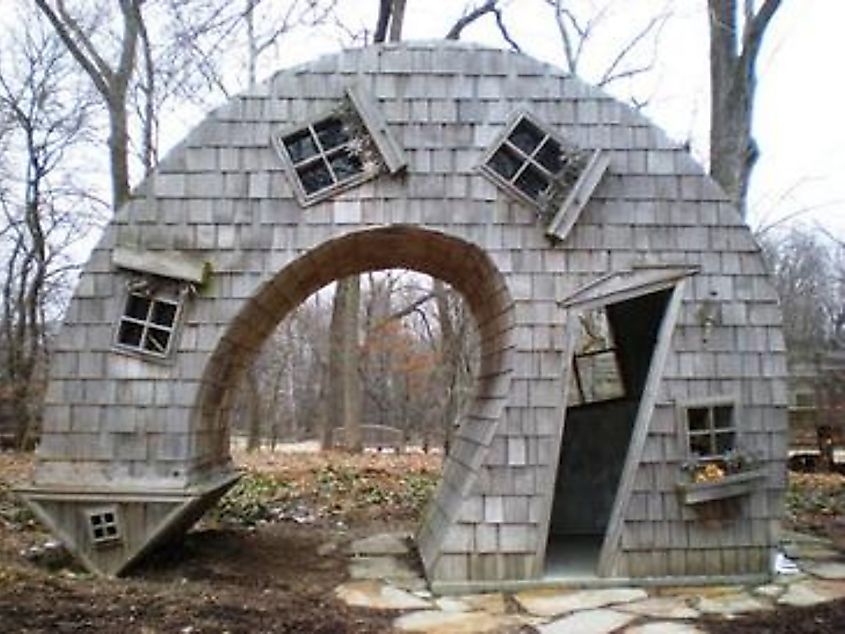
Some sculptures are meant to be admired from a distance. This one invites you to crawl inside. Inside the Indianapolis Art Center’s ARTSPARK, there’s the Twisted House, a cedar sculpture by Indiana artist John McNaughton built in 2005. The building is deliberately askew: its base and roof twist down to meet the forest ground, and its five glass panes disregard all sense of symmetry.
It is placed atop a natural stone base along a woodland trail, and people are encouraged to step inside and move around its bent corners. After years of weather damage, the Art Center launched a fundraiser in 2020 to restore it. It’s odd, it’s walkable, and it’s one of Indiana’s most surreal photo opportunities.
The World’s Largest Ball of Paint, Alexandria

In 1977, Michael Carmichael of Alexandria, Indiana, started an odd project with his son: painting a baseball. This simple activity evolved into the creation of the World’s Largest Ball of Paint. Over the decades, the ball has accumulated more than 29,000 layers of paint and weighs over 11,000 pounds. It now hangs from the ceiling inside a specially designed barn.
Visitors from around the world can schedule appointments to add their own layer of paint. Each visitor receives a certificate commemorating their contribution to this collaborative, ever-growing artwork.
Jug Rock, Shoals
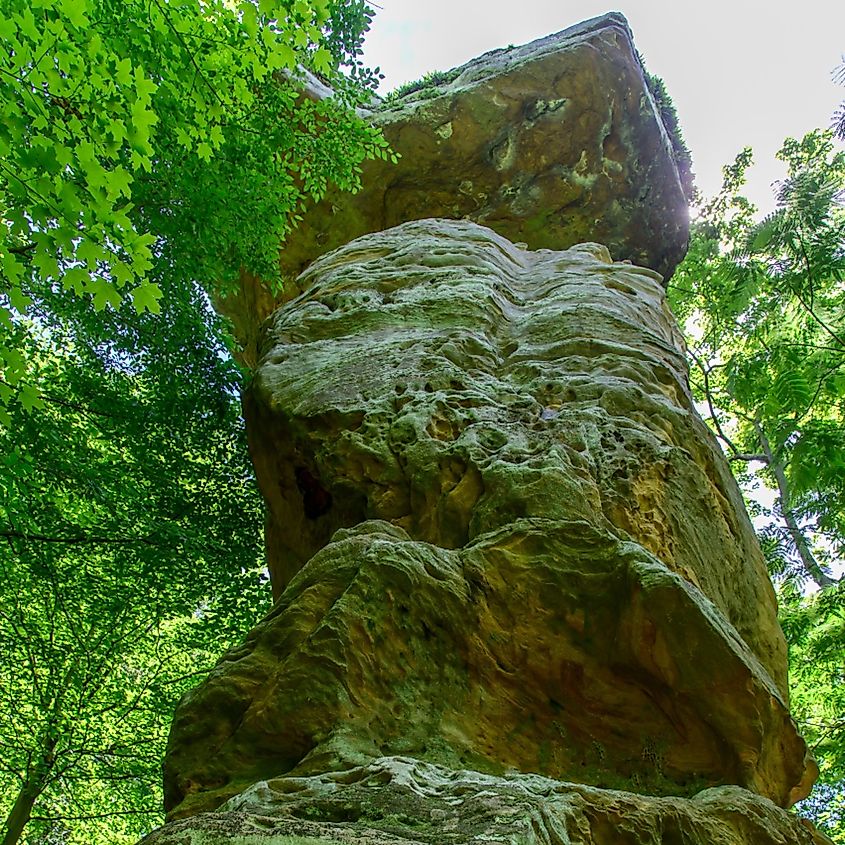
If Indiana ever held a rock beauty pageant, Shoals’ Jug Rock would win for strangeness alone. This 60-foot-tall sandstone pillar resembles a jug with a stopper—hence the name. It is the largest free-standing table rock formation east of the Mississippi River, formed over 300 million years of erosion along natural fracture lines. Local geologists call it a “tea table” or “stand rock,” though there is nothing dainty about it.
The pillar stands near the East Fork of the White River and is visible from a pull-off on US Route 50, with signage explaining its history. House Rock, another geologic oddity, stands nearby. Visit for the geology, stay for the jug no one asked for.
Studebaker Tree Sign, Bendix Woods

If you think branding is a 21st-century obsession, meet the forest that reads “STUDEBAKER.” In 1938, the company planted over 8,000 red and white pines with help from the Civilian Conservation Corps to create one enormous aerial advertisement. Each letter stretches over 250 feet, with the whole area covering 225 acres of land.
The trees were planted on what was once the company’s test track, now Bendix Woods County Park. Storms and neglect thinned them, but restoration efforts from 2012 to 2015 revived the area. It is now listed on the National Register of Historic Places.
The Catacombs of Tomlinson Hall, Indianapolis
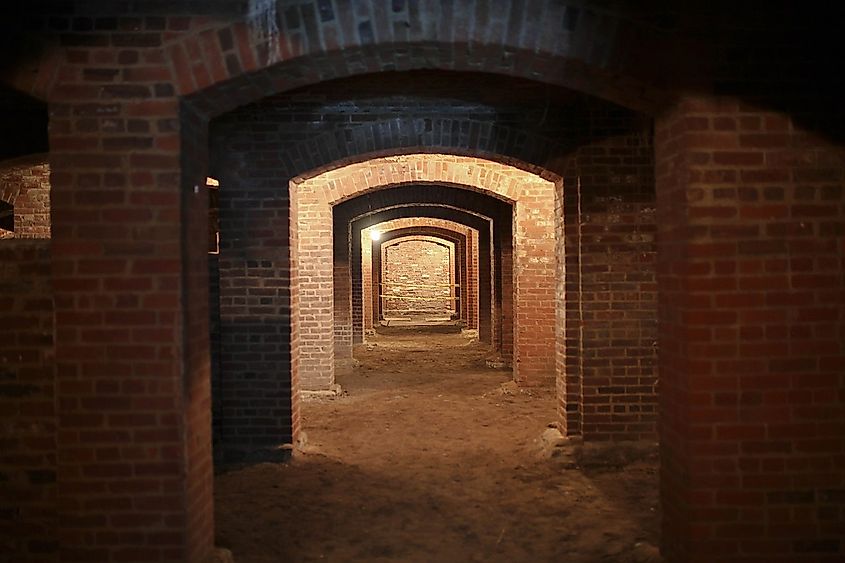
If you believe Indianapolis keeps its secrets above ground, look again. Underneath the busy City Market lies a hidden treasure: the basement-level, 20,000-square-foot catacombs of Tomlinson Hall. Built in 1886, the hall once hosted everything from concerts to political rallies and could seat over 4,200 people.
In the brutal winter of 1911 to 1912, the catacombs sheltered the homeless during the “Mayor’s Pajama Party.” A fire, reportedly started by a pigeon dropping a lit cigarette, destroyed the building in 1958. Only the subterranean structure remains. Indiana Landmarks offers tours, and plans are underway to integrate the ruins into a new public plaza. It is an underground adventure through Indy’s strangest corridor of history.
The Pyramids, Indianapolis
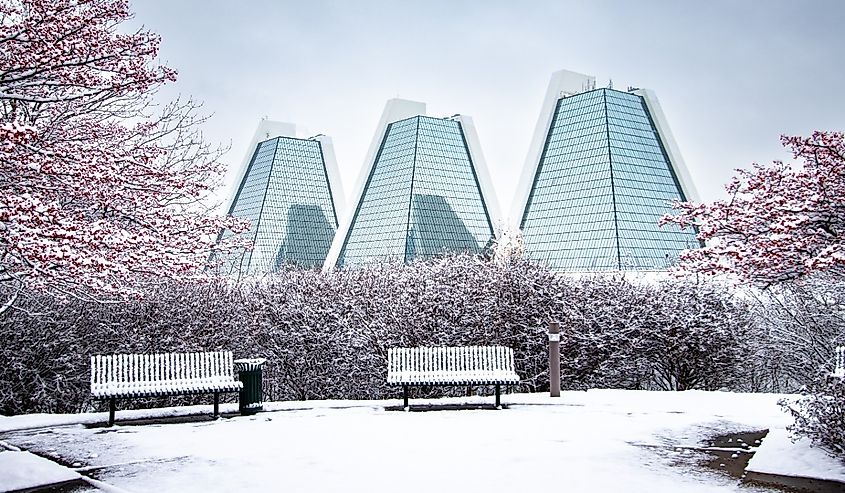
Rising unexpectedly on the city’s northwest side, The Pyramids are three 11-story, blue-glass towers that resemble futuristic ruins. Designed by architect Kevin Roche and completed in 1972, the buildings overlook a 25-acre lake. Each structure contains over 120,000 square feet and is connected by both underground and aboveground corridors. Roche had originally designed nine structures, but only three were built.
A major renovation was completed in 2024, updating the interiors with sleek lobbies, a fitness center, and landscaping, without altering the iconic exterior. The buildings anchor the 200-acre College Park development and are open to visitors during business hours. They are functional, futuristic, and just odd enough to make you look twice.
You don’t have to believe in ghosts, folklore, or conspiracy theories to enjoy Indiana’s quirkiest landmarks—you just need curiosity and maybe a full tank of gas. These weren’t built for viral fame. They came from eccentric visions, creative ambition, or just a lot of leftover paint. Whether you are tracing giant letters through trees or staring up at pyramids in the suburbs, there is a real history behind every strange stop. They are open to the public, rooted in fact, and just as odd as anything in a museum. You will leave with more questions than answers, and that’s the fun part.
